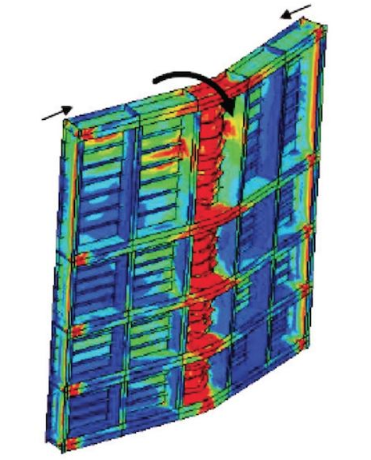Optimisation of Ship and Offshore Structures and Effective Waterway Infrastructures to Support the Global Economic Growth of a Country/Region
DOI:
https://doi.org/10.25043/19098642.155Keywords:
Navigation, inland waterway, optimisation, ship collision, lock gate, ship structure, analytical method, LBR-5, super-element, EMSHIP, waterway classificationAbstract
This paper includes the following parts:
• Ship Structure Optimization: methodology to perform ship scantling optimization, decreasing steel weight and keeping the production cost at an acceptable level. We first review the links between “Design” and “Optimization” and secondly define the place of “Ship Structure Optimization” within the general framework of a “Ship Optimization”.
• Ship impacts (Collision), with applications to navigation lock and dry dock gates: these gates have to be designed taking into account accidental loads, such as ship collisions. A new simplified analytical method is proposed, based on the so-called super-element method. This method was developed to rapidly assess the crashworthiness of the collided structure and avoid high computational effort of numerical simulations.
• Inland waterway Navigation and the development in South America of Inland Waterway Classifications.
• EMSHIP, European ERASMUS MUNDUS education program (www.emship.eu): the unique master’s degree in Ship & Offshore Structures awarded by the prestigious European Erasmus Mundus Program. EMSHIP shares the outstanding experiences of educators, trainers, industrial partners and students in the rapidly developing areas of marine and offshore engineering industry.Downloads

Published
How to Cite
Issue
Section
License
The authors who publish in this Journal certify that:
- The work submitted for publication in The Ship Science and Technology journal, was written by the author, given that its content is the product of his/her direct intellectual contribution.
- All data and references to material already published are duly identified with their respective credits and are included in the bibliographic notes and quotations highlighted as such.
- All materials submitted for publication are completely free of copyrights; consequently, the author accepts responsibility for any lawsuit or claim related with Intellectual Property Rights thereof, Exonerating of responsibility to The Science and Technology for the Development of Naval, Maritime, and Riverine Industry Corporation, COTECMAR.
- In the event that the article is chosen for publication by The Ship Science and Technology journal, the author state that he/she totally transfers reproduction rights of such to The Science and Technology for the Development of Naval, Maritime, and Riverine Industry Corporation, COTECMAR.
- The authors retain the copyright and transfer to COTECMAR the right of publication and reproduction of the work which will be simultaneously subject to the Creative Commons Attribution License (CC -BY) , which allows the license to copy, distribute, display and represent the work and to make derivative works as long as it recognizes and cites the work in the manner specified by the author or licensor.
- For more information about the Creative Commons Attribution License (CC -BY) and his use and scope, please visit the following web page https://creativecommons.org/licenses/by-sa/4.0/legalcode








